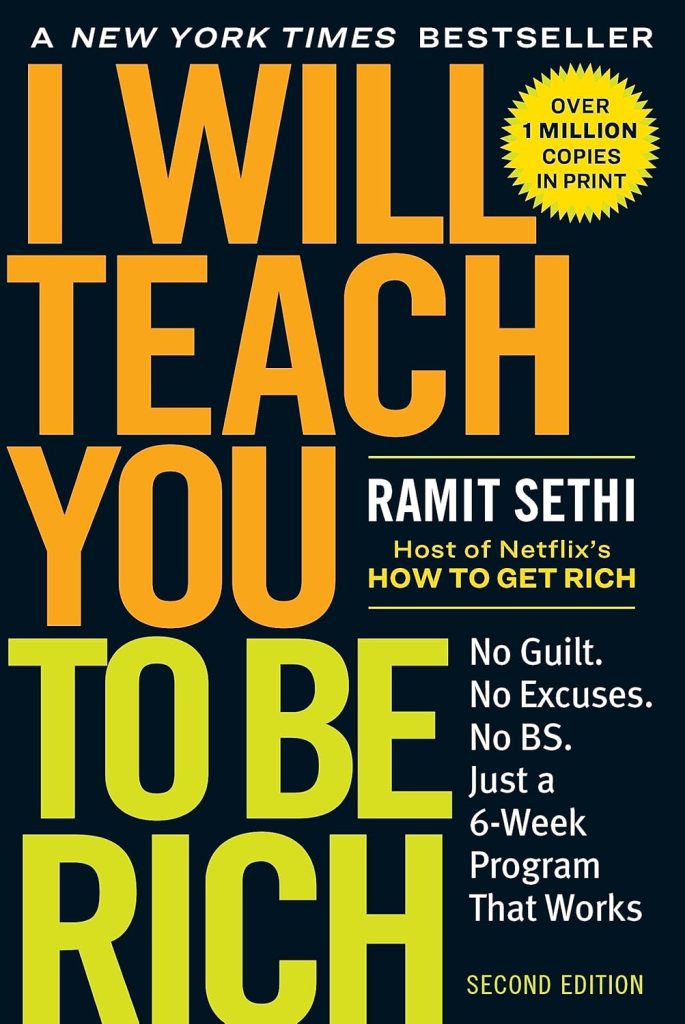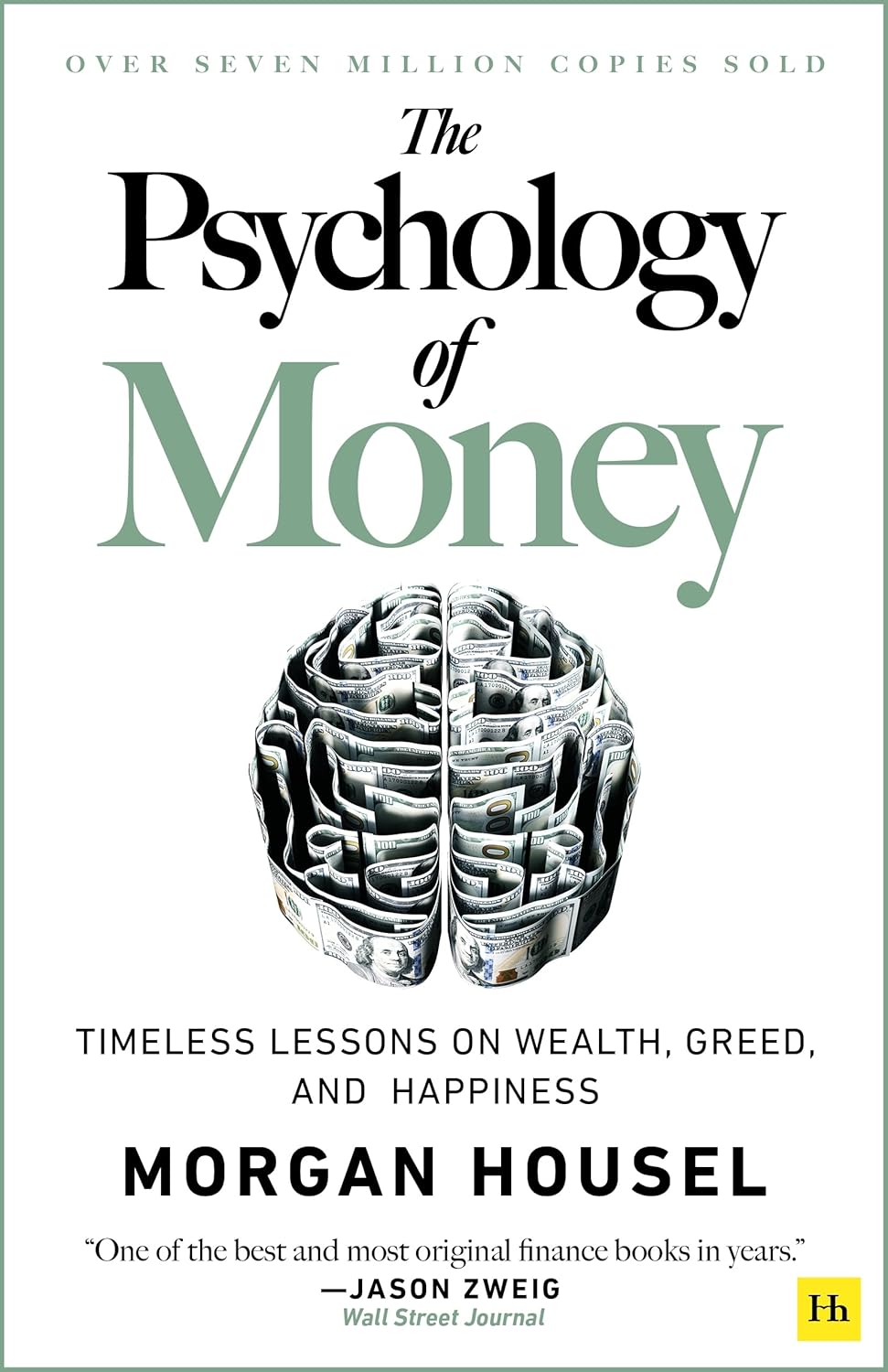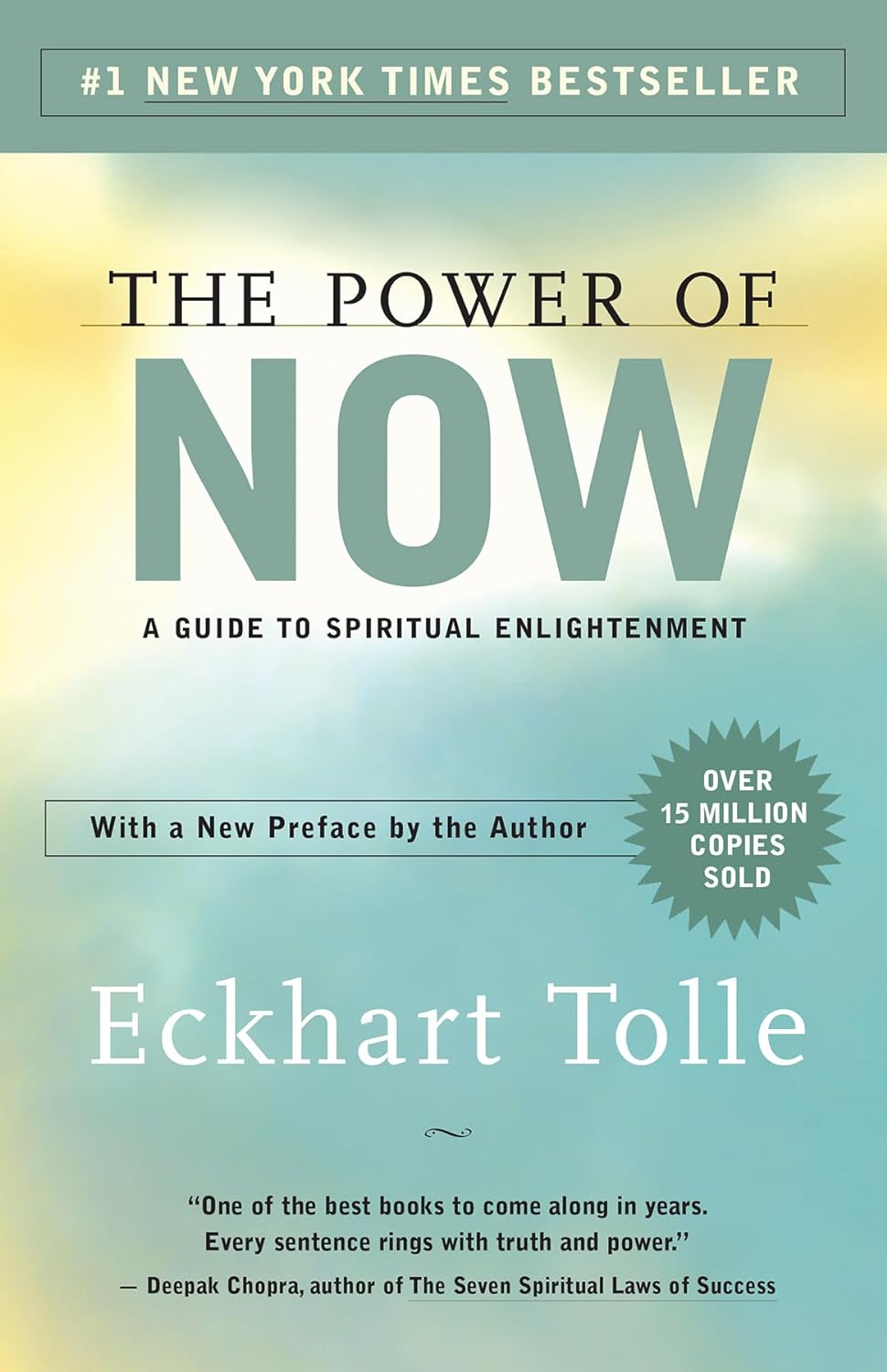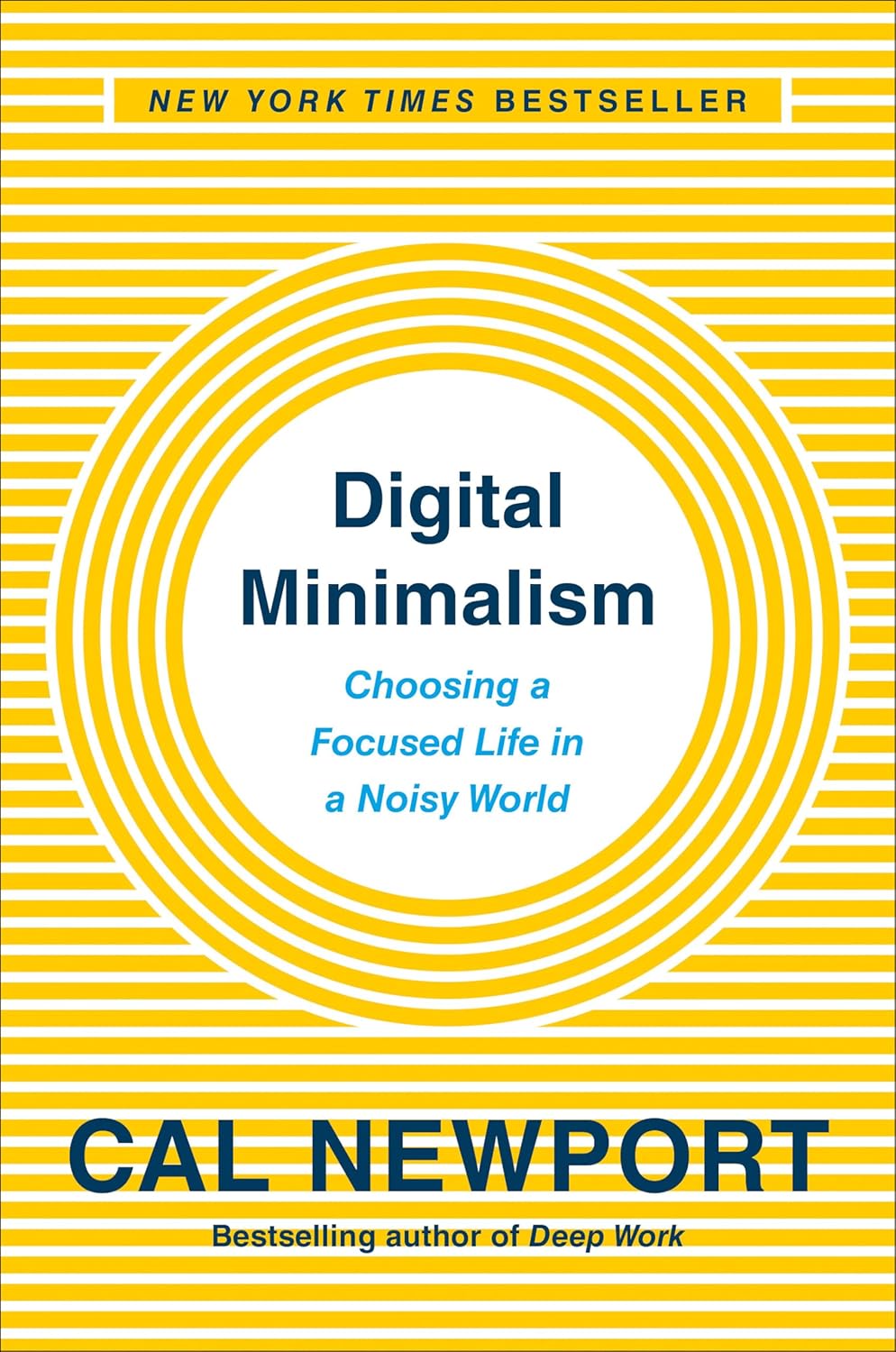
Buy The Book
Chapter
- ✦ An Open Letter To New Readers
- ✦ Introduction: Would You Rather Be Sexy Or Rich?
- ✦ Chapter 1: Optimize Your Credit Cards
- ✦ Chapter 2: Beat the Banks
- ✦ Chapter 3: Get Ready to Invest
- ✦ Chapter 4: Conscious Spending
- ✦ Chapter 5: Save While Sleeping
- ✦ Chapter 6: The Myth of Financial Expertise
- ✦ Chapter 7: Investing Isn’t Only for Rich People
- ✦ Chapter 8: How to Maintain and Grow Your System
- ✦ Chapter 9: A Rich Life
I Will Teach You to Be Rich: No Guilt. No Excuses. Just a 6-Week Program That Works

About
Ramit Sethi, author and finance expert, presents a practical, no-nonsense six-week program in “I Will Teach You to Be Rich” for gaining control of your finances. Eschewing restrictive budgeting, Sethi advocates for automating finances, conscious spending on what you love, and cutting costs mercilessly on what you don’t.
The book guides readers through optimizing credit cards, setting up the right bank accounts, and investing, even with small amounts of money. It emphasizes building a simple, efficient financial infrastructure that runs automatically, allowing readers to focus on living a “rich life” defined by personal values and experiences rather than endless frugality. Sethi debunks common financial myths and encourages proactive engagement with money management, empowering readers to take charge of their financial futures and design a life aligned with their aspirations.

Spark
Learn
Review
✦ An Open Letter To New Readers
I acknowledge that if you listen to all the internet influencers telling you what you “need” to do every morning, your day would be overwhelming with many tasks. I prefer advice that actually works. After taking a hard look at the advice I gave a decade ago, I realized I was right. If you followed the advice in this book ten years ago, you would have accomplished a lot by now. If you had invested just $100/month, that $12,000 would have turned into over $20,000. You would be spending less than 90 minutes per month on your money. Money would have gone from a source of anxiety and confusion to one of calm and possibility.
I do things differently than typical money “experts.” I won’t lecture you about cutting back on lattes and won’t try to convince you to keep a budget. I am a real guy. I want to hear from you. Tell me what made you decide to take control of your money today and what your Rich Life looks like.
The Rich Life is about freedom. I made three mistakes when writing the first edition. First, I didn’t cover the emotions around money. If you don’t tackle your invisible money scripts, none of it matters. Second, I was too overbearing. You choose what your Rich Life is and how you get there. Finally, I messed up quite a few things in my life.
I’ve added new material. New tools, new investment options, and new approaches to money. New money scenarios you’ll confront. Incredible stories from other readers. The value in this book doesn’t come from novelty; it comes from usefulness. I’ve gotten married, grown my business, and learned more about money and psychology. Amidst the noise, hype and apps, the personal finance system works. Long-term, low-cost investing works. Automation works. Use this book to create your own Rich Life, just like thousands of others have.
✦ Introduction: Would You Rather Be Sexy Or Rich?
I’ve always been curious about why people gain weight after college, and I see parallels between how people approach food and money. Just as people focus on minor details when trying to lose weight, like avoiding carbs or drinking apple cider vinegar, they also get caught up in insignificant financial details, such as interest rates or the hottest stocks.
Most people either ignore their finances and feel guilty or obsess over details without taking action. The truth is, you don’t need to be a financial expert to get rich; you just need to know the basics and get started.
There are many reasons why people don’t manage their money, but they often boil down to excuses. Some people feel overwhelmed by too much information, leading to inaction. Others blame external factors, like the economy or baby boomers. However, I believe it’s important to focus on what you can control.
That’s why I wrote this book: to empower you to take control of your financial situation. I want you to have a level playing field against Wall Street firms and your own psychology. I believe in small steps and reducing the number of choices that paralyze us. It’s more important to get started than to research the best fund. I want you to know enough to set up automated accounts and invest, even with just a small amount.
Ultimately, your goal probably isn’t to become a financial expert but to live your life and let money serve you. Instead of asking, “How much money do I need to make?”, you’ll ask, “What do I want to do with my life, and how can I use money to do it?”. I want you to be guided by what history has shown us about investing and growth, not by fear.
✦ Chapter 1: Optimize Your Credit Cards
I’m going to show you how to squeeze as many rewards and benefits out of your credit cards as possible and start winning against them. I see credit cards as giving you thousands of dollars worth of perks. If you pay your bill on time, they’re a free short-term loan. They help you keep track of your spending and offer free warranty extensions and rental car insurance. Many offer rewards and points worth hundreds or even thousands of dollars.
As long as you manage them well, they’re worth having. But if you don’t completely pay off your bill, you’ll owe an enormous amount of interest. I want you to play offense by using credit cards responsibly and getting as many benefits out of them as possible, optimizing your cards and using them to improve your credit.
A good credit score can save you hundreds of thousands of dollars in interest charges. Your credit report gives potential lenders basic information about you, your accounts, and payment history. Your credit score is a single number between 300 and 850 that represents your credit risk to lenders. It’s ridiculously easy to check your credit score and credit report.
When choosing a card, don’t accept offers that come in the mail or from retail stores. Squeeze every reward you can out of your credit cards, and pick a good one, then move on with your life. Don’t sign up for retail store credit cards, and don’t go card crazy. There’s no magic number of cards you should have, but each card means added complexity.
To optimize your credit cards, pay them off regularly, and try to get fees waived. Negotiate a lower APR, and keep your main cards for a long time, keeping them active but also simple. If you have no debt, get more credit, increasing your credit utilization rate. Finally, use your credit card’s secret perks.
✦ Chapter 2: Beat the Banks
I want to show you how to open high-interest, low-hassle accounts and negotiate fees like an Indian.
Banks make a ton of money, even though interest rates are low. They get it from ATM fees, overdraft fees, and other charges. The average overdraft fee is around \$35, and most people don’t even realize they’re being charged. Banks also use tricky marketing tactics to get you to sign up for accounts that aren’t in your best interest.
I use a few different bank accounts: a checking account, a high-yield savings account, and a brokerage account. I recommend keeping your savings account at a different bank than your checking account, making it harder to impulsively transfer money. Open a high-interest, no-fee savings account online. I like online banks because they typically offer better interest rates and lower fees than traditional brick-and-mortar banks.
Most people stick with terrible bank accounts because they’re lazy or don’t think it’s worth the hassle to switch[1]. But it’s actually pretty easy to switch banks, and it can save you a lot of money in the long run. Don’t fall for banks’ marketing tactics, like offering free gifts or promising high interest rates that are only temporary.
I want to show you how to negotiate out of fees with your current bank. Call your bank and ask them to waive any fees you’re being charged. Be polite but firm, and don’t be afraid to escalate to a supervisor if necessary. Use my script: “I’ve been a customer for a long time, and I’m thinking of switching to another bank. Can you waive this fee for me?”. Banks often agree to waive fees to keep your business. Even better, ask them to automatically waive all ATM fees, regardless of the amount.
Banks hate me because I empower you with information like this. They want you to stay in the dark so they can keep raking in the fees. But I’m here to help you beat the banks at their own game.
One of the biggest problems with money management is that people think it’s hard. I am here to show you that it’s simple, easy, and fast.
✦ Chapter 3: Get Ready to Invest
I’m about to show you how to get ready to invest, step by step. Investing is the single most effective way to get rich, but many of your friends are scared of it. That’s because they listen to others instead of learning how to invest themselves.
I’ll guide you through where your money should go, introducing you to the ladder of personal finance. The first step is mastering your 401(k), then crushing your debt. Next, we’ll explore the beauty of Roth IRAs and whether robo-advisors are right for you. I’ll even reveal the exact account I use.
I’ll explain HSAs and opportunities beyond retirement accounts. I am going to tell you to invest in low-cost index funds. In most cases, I am against you picking individual stocks. Some people are going to tell you that “now is the time to buy gold!!” Do not listen to them.
The single most important thing you can do to get rich is to start early. I want to help you set up your 401(k) and Roth IRA, even if you can only invest a small amount, like \$50. I’ll show you the exact steps to take, from opening your accounts to choosing the right investments. You don’t need to be an expert to start building wealth. Investing early, even with small amounts, can make a huge difference in your long-term financial success.
✦ Chapter 4: Conscious Spending
I’m going to reveal how to save hundreds per month and still buy what you love. I want to show you how to spend extravagantly on the things you love and cut costs mercilessly on the things you don’t—without making an annoying budget.
I think there’s a difference between cheap people and conscious spenders. Cheap people try to economize every purchase without considering whether they truly value it. I am not talking about that.
You’ll learn how my friend spends \$21,000 per year going out—guilt-free. I want to show you how to use psychology against yourself to save. I’ll introduce the four buckets: fixed costs, savings, investments, and guilt-free spending money. I use the envelope system for not overspending. I’ll address this question: What if you don’t make enough money to save? I will teach you how to make more money. I want you to be able to handle unexpected expenses.
I want you to consciously decide how to spend your money, rather than wondering where it all went. The key is to create a Conscious Spending Plan. I will help you focus on the Big Wins to get disproportionate results, including automating savings and investments, finding a job you love, and negotiating your salary. I want you to get the Big Wins right so you can order as many lattes as you want.
A Rich Life is about intentionally designing your spending, not deprivation. Conscious Spending is allowing yourself to spend money on the things that bring you joy, even if they seem frivolous to other people, or even frivolous to you.
I want you to be empowered to take control of your situation, no matter where in life you started from. That’s why it’s important to focus on what you can control. I created this Conscious Spending Plan to be a flexible way to manage your money without the stress of budgeting or the guilt of spending on the things you love.
✦ Chapter 5: Save While Sleeping
I’m going to reveal how to make your accounts work together automatically. I aim to show you how to spend only 90 minutes a month managing your money. It’s about harnessing the power of defaults and leveraging psychology to boost your savings effortlessly.
I will guide you in creating an automatic money flow system. This involves setting up various online accounts and strategically automating transfers between them. The goal is to channel your money to different accounts, including paying credit card bills, setting aside money for short-term savings goals, long-term investments, and guilt-free spending. This automation ensures that your bills are paid on time, savings are consistent, and you can spend without constantly worrying about where your money is going.
Once you’ve set up your automatic finances, I want you to use that as fuel for your rich life. I want you to see how you can take more vacations, give generously, and spend time with family. It’s about making your financial system work for you so you can enjoy your money without sacrificing your long-term goals.
I want you to put money in your accounts at least once a month, even if it’s a small amount. Every time you get paid, have a certain percentage go directly into your investment accounts. With automation and the correct accounts, you will manage your money in literally an hour and a half per month.
✦ Chapter 6: The Myth of Financial Expertise
Let’s talk about why professional stock pickers and wine tasters are clueless—and how you can beat them with simple, boring strategies. Most people assume financial “experts” know secrets we don’t. Spoiler: They don’t. Wall Street firms spend millions trying to predict market movements, yet they fail more than half the time. Even professional wine tasters can’t consistently distinguish between cheap and expensive wines. If they can’t get it right, why should we trust them?
I’ll show you how experts hide poor performance. They cherry-pick timelines, compare themselves to irrelevant benchmarks, or invent jargon to sound smarter. The truth? Actively managed funds underperform low-cost index funds over 80% of the time. Yet we keep falling for their sales pitches because complexity feels sophisticated.
You don’t need a financial adviser. Many charge hidden fees, pushing products that earn them commissions instead of serving your best interests. When two wealth managers tried recruiting me, their pitches revolved around flashy terms—not results. One even admitted his firm’s fees would cost me $1.4 million over 40 years.
Active management vs. passive management is a rigged game. Active managers trade frequently, racking up taxes and fees, while passive strategies like index funds sit quietly and compound. Over time, the tortoise beats the hare every time. Yet our brains love the thrill of “picking winners,” even though history proves it’s a losing strategy.
I want you to ignore the noise. Turn off CNBC, skip the stock-tip forums, and stop obsessing over daily market swings. Focus on what you control: minimizing fees, automating investments, and staying consistent. The most successful investors aren’t the ones chasing trends—they’re the ones who set up a system and forget it.
Financial expertise isn’t about predicting the future. It’s about discipline, simplicity, and recognizing that “average” returns are actually extraordinary when compounded over decades. Let the experts argue over string tension—you’ll be too busy winning the game.
✦ Chapter 7: Investing Isn’t Only for Rich People
I want to prove to you that you don’t have to be rich to invest, and I am going to get you to spend the afternoon picking a simple portfolio that will make you rich. I want you to discover the beauty of automatic investing and show you how to avoid common mistakes.
I believe that asset allocation is more important than picking the “best stock of the year!” Your investment plan is more important than any individual investment you make. I am also going to address retiring in your 30s or 40s, and I will tell you about the FIRE movement and how you can achieve Financial Independence, Retire Early.
I am going to let you choose between convenience or control. You can decide whether you want to use target-date funds or pick your investments. I will teach you about the many flavors of stocks and bonds.
I want to help you create your own portfolio by handpicking your investments, investing the easy way with target-date funds, feeding your 401(k) and IRA, and show you the Swensen model of asset allocation. Also, I want to caution you against insane crypto “investments.”
I’m going to show you that the key to success is to diversify, keep your costs low, and invest consistently over the long term. By automating your investments and focusing on the big picture, you can build wealth and achieve your financial goals without becoming an expert. Even with a basic understanding of investing, you can create a portfolio that grows steadily over time, allowing you to achieve financial independence and live a rich life.
✦ Chapter 8: How to Maintain and Grow Your System
I want to show you how to maintain and grow your system. Now that you’ve done the hard work, I will show you how to feed your system, ignore the noise, rebalance your investments, and show you what to believe about taxes. I’m going to give you a ten-year plan and reveal the importance of giving back when you’re rich.
I want you to think of your finances like a garden: If you just plant the seeds and walk away, you might get a little growth, but you’ll never get the luscious garden you imagined. It takes continued work and attention. The more you put in, the more you’ll get out.
I will help you to rebalance your portfolio. Rebalancing involves selling some investments and buying others to maintain your original asset allocation. Nutty beliefs about taxes are common, and I will debunk them.
I will also give you an idea for a ten-year plan. Think back to a particularly inspiring moment in your life and what made it special. Is it possible to design your life around more moments like that? Is it possible to spend less time around people who make you feel bad?
I want you to think about giving back. I believe that giving is an essential part of a Rich Life. Not just because it’s nice, but because it adds fulfillment to your life in a way that buying material objects never can. I want you to be intentional about it. It is critical to remember that you should not give because you feel you “should.” Give because you want to. Give because it will make you feel great.
✦ Chapter 9: A Rich Life
A Rich Life is about more than just money; it encompasses the experiences and values that define personal fulfillment. I want you to think deeply about what being rich means to you. It’s essential to consider your financial goals in the context of your life, including relationships, career choices, and significant purchases like a car or a home.
Managing student loans can be a tough decision—whether to pay them down or invest. I encourage open conversations about money with your partner, as understanding each other’s financial perspectives is crucial. Discussing finances openly can prevent misunderstandings and strengthen your relationship.
When it comes to big events like weddings, it’s important to navigate societal pressures and expectations. Many people feel hypocritical about their wedding expenses, so I urge you to prioritize what truly matters to you and your partner.
Negotiating your salary is another key aspect of achieving a Rich Life. Don’t shy away from asking for what you deserve; it’s a vital part of building wealth.
Buying a car or a house requires careful consideration. Understand the benefits of renting versus owning and evaluate whether real estate is a good investment for you.
Planning for future purchases should be intentional. Define your Rich Life clearly, focusing on experiences that bring joy rather than material possessions.
Ultimately, creating a Rich Life involves aligning your financial decisions with your personal values and aspirations, allowing you to live fully and authentically while managing your finances wisely.✦ The Origin Of This Book
For People
– College students
– Young professionals
– People new to personal finance
– Individuals seeking to automate their finances
– Those wanting to spend consciously
Learn to
– How to optimize credit cards
– How to automate savings
– How to invest, even with small amounts
– How to spend consciously
– How to negotiate fees









